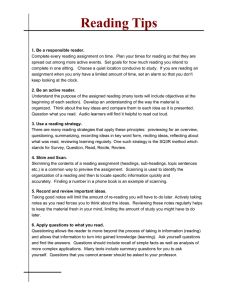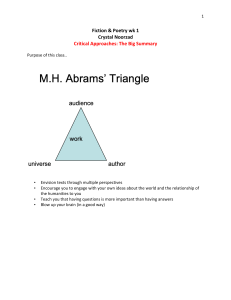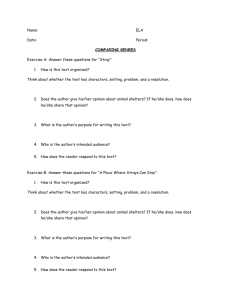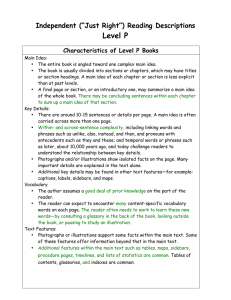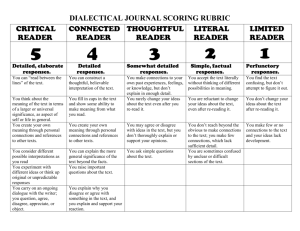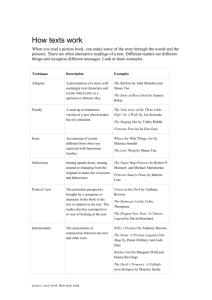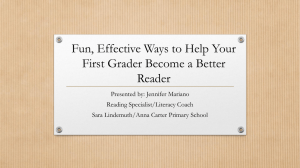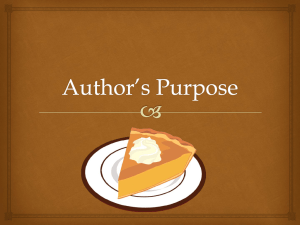How Texts Construct a Version of Reality ho
advertisement
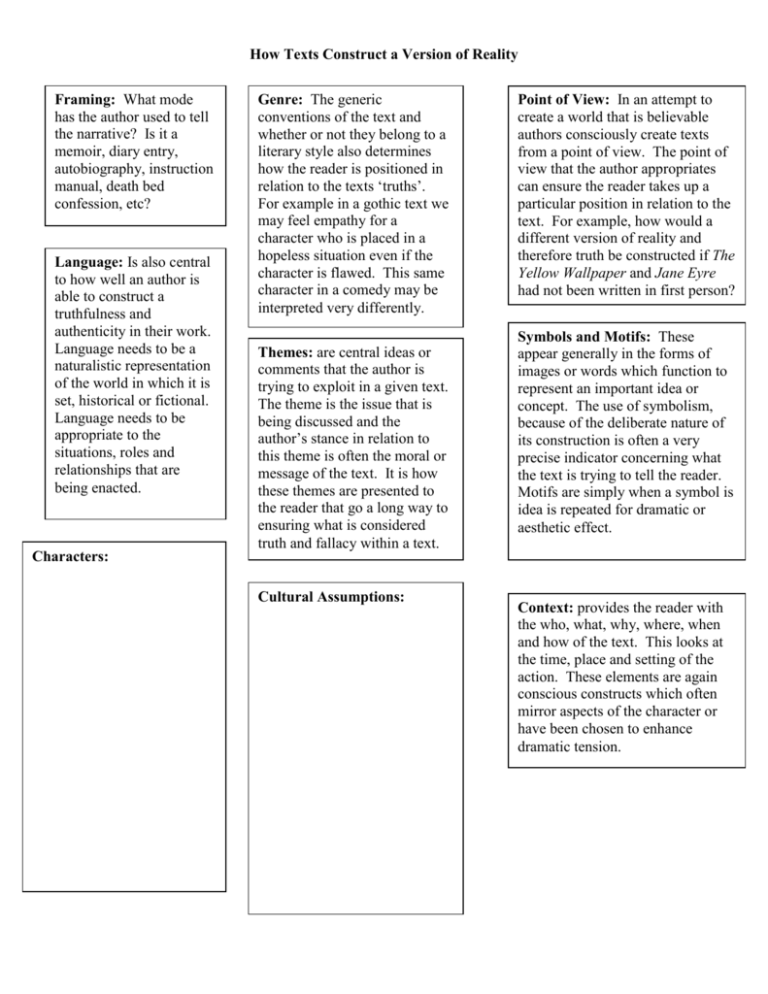
How Texts Construct a Version of Reality Framing: What mode has the author used to tell the narrative? Is it a memoir, diary entry, autobiography, instruction manual, death bed confession, etc? Language: Is also central to how well an author is able to construct a truthfulness and authenticity in their work. Language needs to be a naturalistic representation of the world in which it is set, historical or fictional. Language needs to be appropriate to the situations, roles and relationships that are being enacted. Characters: Genre: The generic conventions of the text and whether or not they belong to a literary style also determines how the reader is positioned in relation to the texts ‘truths’. For example in a gothic text we may feel empathy for a character who is placed in a hopeless situation even if the character is flawed. This same character in a comedy may be interpreted very differently. Themes: are central ideas or comments that the author is trying to exploit in a given text. The theme is the issue that is being discussed and the author’s stance in relation to this theme is often the moral or message of the text. It is how these themes are presented to the reader that go a long way to ensuring what is considered truth and fallacy within a text. Cultural Assumptions: Point of View: In an attempt to create a world that is believable authors consciously create texts from a point of view. The point of view that the author appropriates can ensure the reader takes up a particular position in relation to the text. For example, how would a different version of reality and therefore truth be constructed if The Yellow Wallpaper and Jane Eyre had not been written in first person? Symbols and Motifs: These appear generally in the forms of images or words which function to represent an important idea or concept. The use of symbolism, because of the deliberate nature of its construction is often a very precise indicator concerning what the text is trying to tell the reader. Motifs are simply when a symbol is idea is repeated for dramatic or aesthetic effect. Context: provides the reader with the who, what, why, where, when and how of the text. This looks at the time, place and setting of the action. These elements are again conscious constructs which often mirror aspects of the character or have been chosen to enhance dramatic tension.
